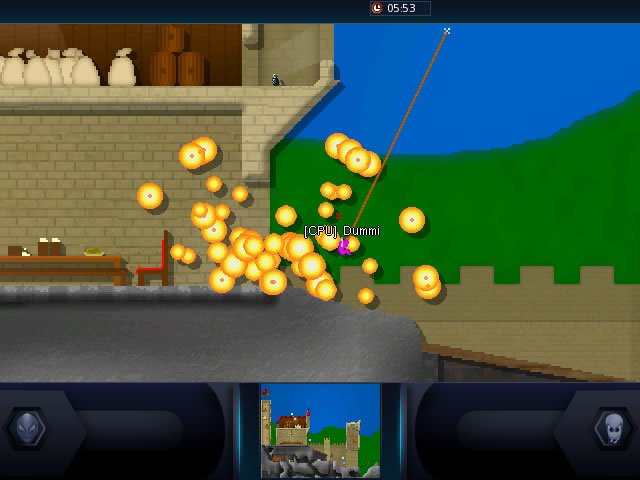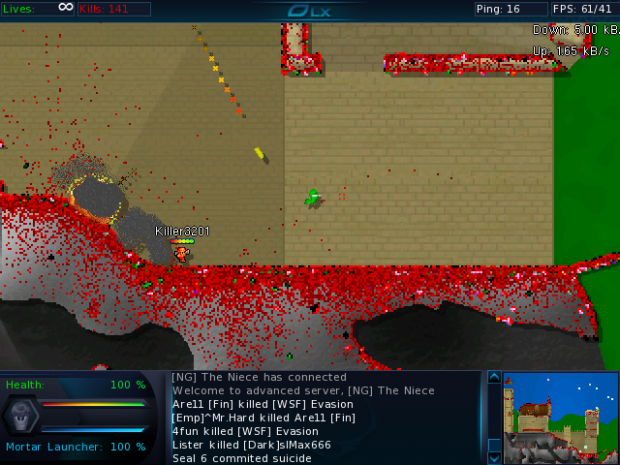
Own modified configs, screenshots and other stuff always will be stored in ~/.OpenLieroX. You can also add more searchpathes and change this in cfg/options.cfg. and /usr/share/games/OpenLieroX for game-data (all path are relative to this bases) (in this order) by default. The game searches the paths ~/.OpenLieroX. The game uses case insensitive filenames (it will use the first found on case sensitive filesystems). Use the MSVC project under build/msvc 2010.
Openlierox decompile lxl code#
The term decompiler is most commonly applied to a program which translates executable programs (the output from a compiler) into source code in a (relatively) high level language which, when compiled, will produce an executable whose behavior is the same as the original executable program.Use the Xcode project under build/Xcode. By comparison, a disassembler translates an executable program into assembly language (and an assembler could be used for assembling it back into an executable program).ĭecompilation is the act of using a decompiler, although the term can also refer to the output of a decompiler. It can be used for the recovery of lost source code, and is also useful in some cases for computer security, interoperability and error correction.

The success of decompilation depends on the amount of information present in the code being decompiled and the sophistication of the analysis performed on it. The bytecode formats used by many virtual machines (such as the Java Virtual Machine or the. NET Framework Common Language Runtime) often include extensive metadata and high-level features that make decompilation quite feasible. debug-symbols, may enable to reproduce the original names of variables and structures and even the line numbers.

Machine language without such metadata or debug data is much harder to decompile. Some compilers and post-compilation tools produce obfuscated code (that is, they attempt to produce output that is very difficult to decompile, or that decompiles to confusing output). This is done to make it more difficult to reverse engineer the executable. While decompilers are normally used to (re-)create source code from binary executables, there are also decompilers to turn specific binary data files into human-readable and editable sources.
Openlierox decompile lxl series#
Design ĭecompilers can be thought of as composed of a series of phases each of which contributes specific aspects of the overall decompilation process. The first decompilation phase loads and parses the input machine code or intermediate language program's binary file format. It should be able to discover basic facts about the input program, such as the architecture (Pentium, PowerPC, etc.) and the entry point. In many cases, it should be able to find the equivalent of the main function of a C program, which is the start of the user written code.

This excludes the runtime initialization code, which should not be decompiled if possible. If available the symbol tables and debug data are also loaded. The front end may be able to identify the libraries used even if they are linked with the code, this will provide library interfaces. If it can determine the compiler or compilers used it may provide useful information in identifying code idioms. For example, the Pentium machine instructionĬdq eax edx is set to the sign-extension≠edi,edi +(tex)push xor eax, edx sub eax, edx The next logical phase is the disassembly of machine code instructions into a machine independent intermediate representation (IR). Some idiomatic sequences are machine independent some involve only one instruction. For example, xor eax, eax clears the eax register (sets it to zero). This can be implemented with a machine independent simplification rule, such as a = 0. In general, it is best to delay detection of idiomatic sequences if possible, to later stages that are less affected by instruction ordering. For example, the instruction scheduling phase of a compiler may insert other instructions into an idiomatic sequence, or change the ordering of instructions in the sequence. A pattern matching process in the disassembly phase would probably not recognize the altered pattern.


 0 kommentar(er)
0 kommentar(er)
